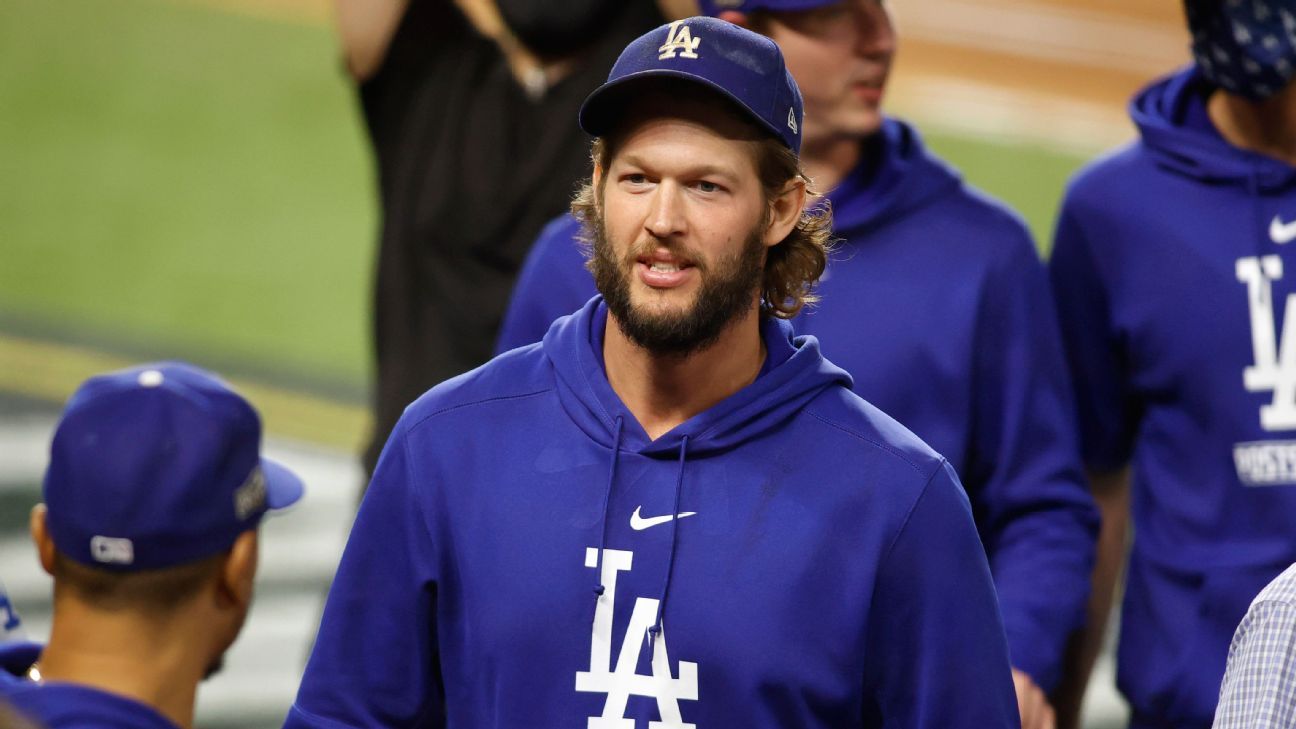ARLINGTON, Texas — Clayton Kershaw‘s 2020 season at times seemed to resemble a dreamscape. There was the vintage summer, which saw him tap back into the type of stuff that seemed to be lost forever. And the dominant postseason opener, a stark reminder of the flaws in the narrative of his playoff career. And the setting for the bulk of his October — minutes away from his home in Dallas, a fitting stage for the World Series trophy that still famously eludes him.
The wake-up call came late Saturday afternoon, during a routine bullpen session, with a shooting pain Kershaw had probably experienced countless times before. His back spasmed. The National League Championship Series — the rest of this storybook season — was suddenly in jeopardy. The Los Angeles Dodgers‘ training staff spent the next 48 hours working diligently to relieve the pain in Kershaw’s back in time for him to make his Game 2 start, until he awoke Tuesday morning and didn’t feel up for it.
Instead, he’ll take the ball in Thursday’s Game 4 — following the Dodgers’ season-saving 15-3 rout over the Atlanta Braves — with some of the highest stakes he has ever encountered.
It’s the difference between tying this NLCS at two games apiece or falling behind 3-1, a hole only 15% of teams have rebounded from in a best-of-seven series. It’s the difference between breathing new life into this incredibly talented team or putting its season on the brink earlier than expected.
Could this be the most important start of Kershaw’s career?
Well, maybe.
There also was Game 6 of the 2013 NLCS, when Kershaw allowed seven runs in four-plus innings to end the Dodgers’ season; Game 4 of the 2015 NL Division Series, when he pitched seven innings of one-run ball to force a decisive Game 5; Game 6 of the 2016 NLCS, when he was charged with five runs in the first five innings of an elimination loss to the Chicago Cubs; and Game 5 of the 2017 World Series, when he famously blew first a four-run lead and then a three-run lead to help tilt the balance in the Houston Astros‘ favor.
But the Dodgers, for as good as they have been through their run of eight consecutive division titles, have never been this good. Few teams ever have. The disappointment of not even reaching the final round with this group would trigger a new level of disappointment for a Dodgers fan base still clamoring for the first title in a generation. A loss on Thursday wouldn’t merely require three consecutive wins; it would require beating both Max Fried and Ian Anderson, two blossoming young starters who have limited the Dodgers to one run in 10 innings this series.
A lot has been made about the difference between Kershaw’s regular-season ERA (2.43 in 2,333 innings) and postseason ERA (4.23 in 172⅓ innings, despite his dominance of the Milwaukee Brewers in the wild-card round) and what that might or might not say about his response to big moments. But the surface numbers don’t tell the whole story. There have been some duds along the way, certainly. But there also has been some brilliance. And there have been a lot of instances when the Dodgers put Kershaw in uncompromising positions, either by extending him too long or using him out of the bullpen with little rest.
Mostly, though, the prevailing thought of Kershaw as a “choker” is rooted in the memories that are most prominent.
A big showing in Game 4 — coming off another back injury, against a high-powered offense, in his hometown, with his team reeling — can change some of that.
